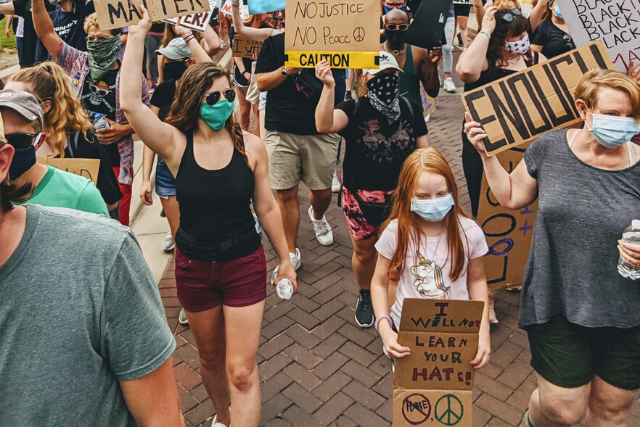5 mental health lessons in Disney’s ‘Encanto’
Have you seen Disney’s “Encanto”?
The movie caught the attention of people of all ages and backgrounds over the past few months with its catchy songs and relatable messages. As a Colombian-American mental health therapist, I found the movie’s many layers exciting, funny, surprising, emotional and also challenging. Although the story is based on a Latino family, the film crosses cultural differences to address topics relatable to most families—including important mental health topics.
The family at the center of the story, the Madrigals, represent a family caught up in the pressure of being perfect, and trying to keep up perfect appearances. Each family member was expected to “perform” their gift, even if it meant suppressing their true feelings and personality.
The movie brings up issues from perfectionism to family pressure, mental illness, estrangement, self-esteem, emotions, people-pleasing, generational trauma, boundaries, parenting, rejection, coping mechanisms and more. Here’s what I consider its five most important mental health lessons:
1. Everyone has a story that impacts our worldview.
The “Encanto” characters have different personalities and stories that influence the way they relate to themselves and others. In the same way, our behaviors, feelings and thoughts are directly influenced by our life story and our upbringing. The reality is that our background impacts the way we experience the world—so it’s important to be aware of it. This includes both healthy and difficult experiences that may alter and shape the way we see ourselves and others.
In the movie, the grandmother’s unresolved trauma (being forced to move to a new land, becoming a young widow and mother in charge of the family while grieving) impacted the entire family dynamic and led to unhealthy coping mechanisms to get through the mental and emotional load. In the same way, when we go through life carrying unresolved painful experiences we can engage in unhealthy coping mechanisms: perfectionism, overworking, addiction, lying, people-pleasing, avoidance, isolation, comparison, and more.
When you become aware of your story, you can come to understand your needs and begin to break unhealthy patterns.
2. Your feelings are valid and it is okay to express them.
Each “Encanto” character is carrying the emotional and mental load of being the “perfect family”—while avoiding the deeper issues jeopardizing their future and foundation. Throughout the movie, the family members, such as Pepa, are often shutdown and shamed when wanting to be themselves and express how they truly feel. They’re seen as too emotional. It’s an important reminder as hiding our true selves and our emotions can take a toll on our mental health and shake our foundation.
Suppressing our feelings can lead to anxiety, stress, depression, low self-esteem and isolation. Identifying, naming and expressing feelings is a human need and nothing to be ashamed of. It is crucial to find healthy outlets to express such feelings instead of ignoring or judging them. Healthy outlets include talking, journaling, praying and crying. Allowing ourselves to be authentic in how we feel and express those feelings is a way of improving our mental health and relationships.
Your feelings matter, they are valuable messengers.
3. A mental illness or challenge does not decrease your worth.
During the movie, Luisa talks about the pressure and heavy mental and emotional load she carries but is afraid to show. She thinks her worth is only found in carrying and solving everyone’s problems and pretending to be strong through it all. What a heavy burden!
The song “Surface Pressure” describes so well what it feels like to experience anxiety and mental illness. Luisa sings about how strong the pressure is and how she feels she is carrying the weight of everyone’s expectations. This is closely related to the stigma around mental illness and how people may feel afraid to share their struggles, fearing it will be seen as weakness.
As another example, let’s talk about Bruno. He saw the world differently and didn’t fit the “family expectations” leading him to be estranged from the family. Bruno was portrayed as someone who had something seriously wrong with him. Yet the real problem was people didn’t get to know who he was and his story. His experience highlights the importance of taking the time to talk about mental health, mental illness and challenges that can affect the way we treat others.
A lack of understanding and fear of talking about it can lead to isolation, labeling and judgement. If you or someone you know has mental health struggles it doesn’t make them any less worthy than those around them.
Everyone deserves to be heard, respected and accepted.
4. Perfectionism is an illusion.
Trying to meet everyone’s expectations is a heavy burden to carry, which Isabela and other members of the family discovered. Saying and doing all the right things to please others is exhausting and unsustainable. The Madrigals had been told to say and do the “right” things and perform their given tasks for the sake of the family’s legacy. However, in the inside, the foundation of their casita was only getting weaker and the cracks bigger no matter how hard they tried to please the family matriarch.
Mirabel was the only family member not given a specific gift or talent. As a result, she was often dismissed and ignored. Mirabel compared herself to others until she went through a transformation. It was only then she realized her role in the family and came to love and accept herself the way she was, which was her true gift.
It’s a good reminder to challenge society’s expectation to be a certain way or productive or perfect to gain acceptance. It’s okay to let go of perfectionism to protect your mental and emotional wellness. A flexible mindset will help you practice self-acceptance and healthier responses to life’s challenges.
Mistakes don’t mean you are failing but are learning and evolving.
5. Generational trauma is as real as generational healing.
As Mirabel showed us, it takes one curious, brave and hopeful person to start breaking cycles and lead the healing path. Maybe the life story you carry has shaken your foundation but it is never too late to change things around. You do not need to wait until things are crumbling to take care of yourself. You deserve to break cycles, rest, heal and grow mentally, spiritually and emotionally. It is okay to be your true self and honor your needs without having to meet others’ expectations.
Part of taking care of your mental health includes self-kindness, boundaries, self-acceptance and authenticity. Accepting and being aware of who you are leads to healthier relationships with yourself and others. When we have difficulty embracing our true self we may get lost in the process of trying to fit in, compare ourselves to what others have, and miss out on the gifts we’re given. It was Mirabel’s curiosity and courage that helped her get out of the comparison spiral, discover her purpose and set her family on a path to healing.
No matter where you come from, you have a story. One of the most powerful tools to experience a mentally, spiritually and emotionally healthier life is to become aware of how your story impacts you today.
It’s never too late to talk about the hard things, be authentic and take care of your needs in order to move forward and evolve. Don’t wait until your foundation cracks. Start paying attention and make the changes you need today.


